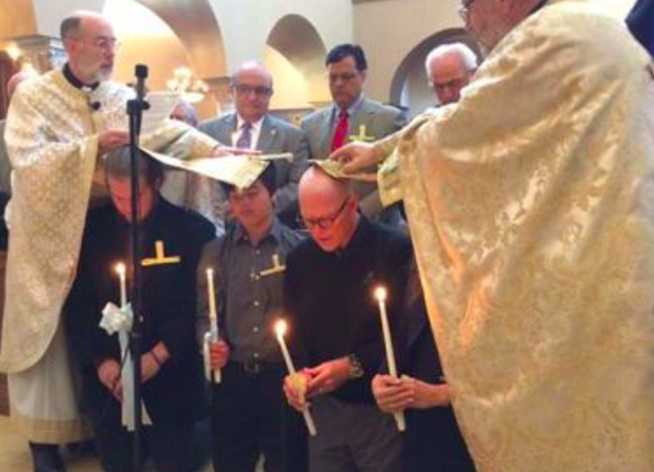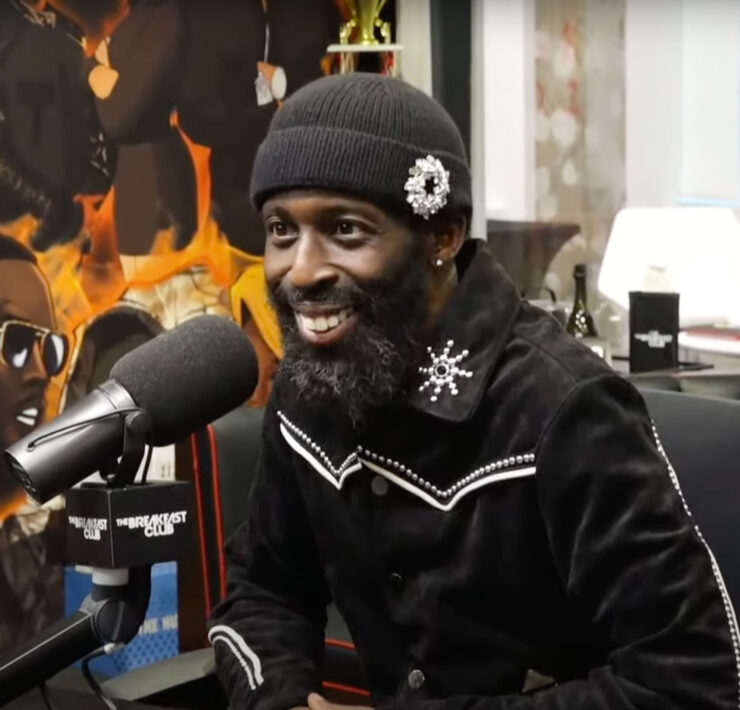
People who grew up going to church whenever the doors were open might be familiar with Hank Hanegraaff. He hosted a popular radio show as the Bible Answer Man, a sort of superhero of biblical trivia who fielded callers’ Bible questions with his encyclopedic scriptural acumen (not to be confused with the Bible Man, who was more of a literal superhero) and a thoroughly, deeply evangelical take on Christianity.
But no more.
According to a Facebook post from an Orthodox priest named Father Thomas Soroka, Haanegraaf, his wife and two of their 12 (12!) children have been baptized into the Eastern Orthodox Church. St. Nektarios Greek Orthodox Church in Charlotte, North Carolina, to be precise.
The news may come as a shock to people who were raised on Hanegraaff’s rigidly Protestant radio show, but as Rob Bowman notes at The Religious Researcher, Hanegraaff’s doctrine has been trending Eastern Orthodox for a while now. As he writes:
[lborder]Although Hanegraaff’s conversion to Orthodoxy is a dramatic development, in a way his theology and religiosity has been in almost constant movement throughout his nearly three decades at CRI. Hanegraaff’s family background was Dutch Reformed and his ministry experience prior to CRI included working with Calvinist pastor and broadcaster D. James Kennedy. When he arrived at CRI he was also a staunch young-earth creationist. Over the years Hanegraaff transitioned to old-earth creationism (which happens to be my position as well) but also passed through two or three forms of eschatology, eventually becoming an advocate for the controversial view known as preterism (which views almost all NT prophecy as fulfilled in the first century). Presumably now that he has become Orthodox he will need to support its traditional eschatology, which is amillennial.
[/lborder]Many American Christians are unfamiliar with Eastern Orthodoxy, but it’s the second largest Christian church in the world and arguably the oldest, depending on how you tally the thing. It’s technically a collection of 13 separate churches marked by the country they’re based out of (i.e. the Russian Orthodox Church, the Greek Orthodox Church, etc.), with a leadership structure broadly similar to the Roman Catholic papacy. Each of the 13 Orthodox churches has a head, with the head of the Eastern Orthodox Church in Constantinople acting as universal patriarch. The Eastern Orthodox Church shares core doctrines with Protestant and Roman Catholic Churches, such as affirming the Trinity, venerating the Bible and confessing Jesus Christ as the Son of God.
But there are some distinctions as well. The Eastern Orthodox Church emphasizes salvation as an ongoing process called “Deification” in which believers become more and more like Jesus, ultimately leading to “theosis” — the closest of all possible unions with God. The Eastern Orthodox Church gives much more authority to Church tradition, known as “Holy Tradition,” than the Protestant Church does. The Virgin Mary is venerated (but she is not worshiped, as critics have sometimes accused the Eastern Orthodox Church of doing.)
Not everyone was pumped about Hanegraaff’s news. The always cantankerous Pulpit and Pen bombastically declared that Hanegraaff had “Left the Christian Faith.” Others, like well-known Christian author Brian Zahnd, said Hanegraaff’s conversion was “a definite improvement.”























